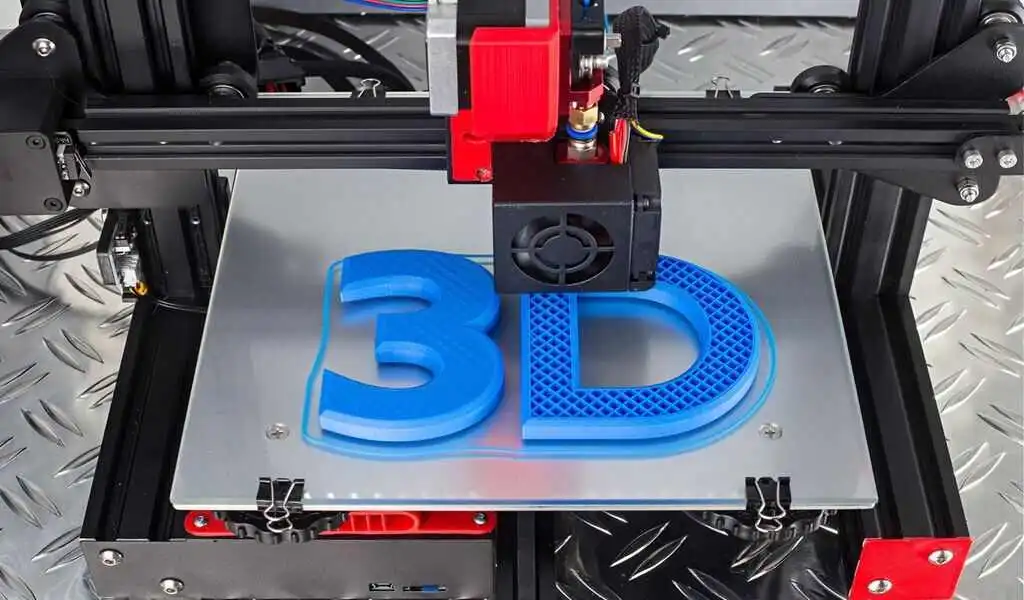Legal
9 Trends That Explain the Future of Printing Industry

There is no denying that the traditional printing industry has experienced a tremendous transformation in recent years. Technology innovation and digitization are the key causes of the printing industry’s rapid evolution.
There is a general consensus that the printing sector is about to undergo significant changes as more and more print companies begin embracing innovations, integrating with digital technologies, and becoming more customized.
As printing industry is growing, new challenges may also arise, and but there may also be new opportunities for growth.
This article will further explain the current developments that are re-shaping the print business. Although these trends are not new, they have lately begun to pick up speed at a never-before-seen rate and are on track to completely change the printing eco-system forever in the future.
1. Rise in online print orders
The growing usage of print order management solution is all set to reshape print industry. It calls for fewer intermediates and helps businesses save a lot of time. In the next ten years, it is anticipated that the majority of printed goods will be ordered online, including prints and printed packaging.
It encourages investment in web-to-print technology and online ordering as a result. Therefore, the purchasing of office printers from Konica Minolta NZ moves towards an online platform economy system.
It will encourage a wider adoption of more efficient workflows, as well as automated and digital printing, finishing, and distribution.
Additionally, this would hasten the ongoing transition of many applications from analogue print to digital printing technology.

2. Increase in demand for Digital Inkjet printing
Offset printing has been around for a while, but because of its expensive costs and extended printing periods, its utilization has steadily decreased.
Commercial inkjet printers are replacing offset printers as the preferred alternative since they are more dependable, effective, quick, and high-quality than offset printers.
These printers can print up to 4000 words in a minute and their speeds for graphics and images are no less.
Although there have been several notable print breakthroughs, inkjet remains the most cutting-edge print technology.
Some of the top ink solutions can also be used in conjunction with this developing digital printing technology. They are even using nanoparticles to make conductive ink. This could lead to a game-changing innovation if it comes to pass.
3. Focus towards environmental sustainability
The printing industry is starting to have serious concerns about environmental sustainability. With the development of digital printing, companies can do more than just relying on renewable resources.
Many businesses are attempting to increase print accuracy while lowering waste and emissions. There is a very high demand of UV-cured inks these days as they don’t require any substrate pre-processing and are eco-friendly.
Also, they give good print quality, are anti-clogging, and dry quickly. They can also be printed on a variety of substrates, including textiles and plastics.
Print buyers want to be ecologically responsible, and they need their clients to think so too. While some continue to advocate going paperless and question the viability of print, this trend is expected to slow as print consumers grow more informed and spread their knowledge.

4. Rise of 3D printing
Printing is no longer limited to paper, all thanks to 3D printing. It is a cutting-edge innovation that has advanced the technical development in printing industry by enabling anyone to produce tangible objects from digital blueprints.
It is a new technology that aims to free production from its limitations and usher in an era of unrestricted digital manufacturing.
Complex designs that were previously impractical because of the limitations of conventional techniques can now be quickly and readily created with little waste using 3D printing.
Companies using 3D printing have a higher chance of attracting more customers as the need for aesthetically distinctive booths rises and will further increase more in future.
5. Shift to cloud connectivity
The majority of company functions are getting digitized in the connected and adaptable business environment of today.
As a result, most businesses are utilizing cloud computing platforms to improve accessibility and communication regardless of platform, location, or time.
The printing industry as a whole is being reshaped by this interconnection, which is enabling the development of cutting-edge solutions that will improve performance and productivity. This promotes and enables greater real-time cooperation by streamlining and optimizing process.
Digital printing businesses are using cloud computing solutions due to the interconnectedness of processes and equipment.
Users can run print operations and edit documents from any device at any time by integrating them into their current print workflows.

6. Increase in outsourcing
Historically, outsourcing has always been popular. The majority of printers at some point outsource something due to capacity, expense, or a lack of resources to produce or complete a particular print job.
Having said that, we are currently discussing a different kind of outsourcing trend, one that refers to the anticipated expansion of print brokers.
A recent study by KeyPoint Intelligence found that the majority (almost 90%) of a PSP’s typical print job expenditures are related to production.
While outsourcing manufacturing to sizable PSPs who exclusively serve the trade and offer extremely low costs, more print enterprises will probably concentrate more on promoting and selling print.
Print brokers that don’t actually make the print will sell and distribute it through a PSP network; this tendency is already present in the online world.
7. Advanced analytics will unlock digitization opportunities
Leaders in the print business have begun embracing data and fostering a data-driven culture throughout their enterprises. For actual consumer intelligence, this goes beyond data analytics and adopts an insight-driven approach.
Manufacturers increasingly use their data goldmines, which span products and customers, to create new business models, boost customer engagement, and improve product design.
Understanding the changing digital customer and linking various data silos to understand client requirements are two of the biggest difficulties faced by the print industry.
Predictive analytics is essential for converting different customer data into coherent insights and gives print service providers a way to find additional revenue opportunities for services that automate digital workflows.

8. Using automation to boost productivity
Intelligent print workflow automation aids in cost savings, risk reduction, and enhanced user experience for businesses.
While robotic process automation (RPA) can automate currently manual and repetitive jobs in the printing industry, intelligent automation, aided by artificial intelligence (AI), can help reimagine or optimize existing business printing processes. Intelligent automation can so free up workers to concentrate on high-value tasks.
More print enterprises will have access to RPA during the course of the upcoming years in order to save time and take organizational productivity to another level.
9. Rise in the use of web-to-print solutions
The web-to-print sector is already growing at a rapid pace and is anticipated to experience exponential growth in future as well.
The Booklets Print research claims that since the advent of digital payment methods and eCommerce, this business has experienced exponential growth.
According to Research and Markets, the global market for web-to-print will be worth $983.4 million in 2020. The global web-to-print market is now growing at a 6.6% clip, and by 2027, it is anticipated to reach a value of $1500 million.
Conclusion on the Printing Industry
The future of printing will undoubtedly undergo many changes due to the quickly evolving technology, including effects on both costs and innovation.
As a result, now is the ideal time for companies invest in modern technologies like print order management or web-to-print solutions to remain competitive in the face of digital innovations.
Related CTN News:
Thailand Issues 10 Step Guide on Cannabis to Tourists

Legal
Thai Court Amends Law to Allows Wives to Sue Husband’s Lovers

Thailand’s Constitutional Court has changed the Civil Code will allow women to sue their husbands’ lovers, male or female. The Constitutional Court found on Tuesday that Section 1523 of the Civil Code breached Section 27 of the constitution, which safeguards Thais’ rights and liberties regardless of gender.
The court directed that the verdict be enforced within 360 days.
Section 1523 of the Civil Code states that husbands can sue their wives’ lovers, and wives can sue other women who publicly display an adulterous connection with their husband.
Keirov Kritteeranon, secretary-general of the Office of the Ombudsman, stated that the Ombudsman had previously urged the court to rule on the legality of Section 1523, which allowed wives to suit only female lovers.
Husbands can now sue their wives’ boyfriends regardless of gender, and there was no requirement for any public declaration of an adulterous connection, he claimed.
Once enforced, Tuesday’s Constitutional Court order, according to the Ombudsman, will correct this imbalance.
Thailand Amends Marriage Law
Meanwhile, Thailand is set to become the first Southeast Asian country to recognise same-sex marriage, after its marriage equality law was passed in the Upper House on Tuesday and is now on its approach to being promulgated before going into effect in the coming months.
LGBTQ+ advocates rejoiced as the Senate voted 130-4 to pass the bill on its final reading, with 18 abstentions. They hailed the development as a win in their long struggle for equal rights.
When the advocates who had gathered at parliament on Tuesday to witness the Senate’s final reading and vote on the measure heard the outcome, they burst out in cheers.
They next went to authorities House, where the authorities had planned a celebratory reception for them later in the day. They then went to the Bangkok Art and Culture Centre, where the party lasted until late at night.
Prime Minister Srettha Thavisin, who is on sick leave due to Covid-19, congratulated them via Zoom call from Government House.
The new law will allow any two people aged 18 or older to register their marriage and obtain the same advantages and rights as heterosexual couples. The bill refers to married couples as “two individuals” rather than “a man and a woman,” and changes their legal status from “husband and wife” to “spouses.”
LGBTQ+ people from any country can legally marry in Thailand. When the bill goes into force, foreign same-sex married partners will be eligible for a spousal visa.
The law will be sent to the government for approval before being presented to the monarch.
It will take effect within 120 days of its publication in the Royal Gazette, making Thailand the third Asian country to accept same-sex marriages after Nepal and Taiwan.
Senator Kamnoon Sidhisamarn, spokesman for the Senate’s special committee evaluating the proposed law, called it a victory for equal rights campaigners.
“There is no reason for the Upper House to disagree with the judgement made by the House of Representatives,” he told reporters. He was referring to the legislation’s passage in the Lower House prior to its submission to the Senate for approval.
The battle for same-sex marriage legislation began 23 years ago. Tunyawaj Kamolwongwat, a Move Forward Party list-MP, said that the law’s passage on Tuesday signified the beginning of a new chapter in Thai history.
Source: Bangkok Post
Court Upholds Israel’s Ban on News Agency Al Jazeera
Legal
Thailand’s Senate Passes Landmark Marriage Equity Bill Legalizing Gay Marriage

Thailand’s Senate has approved a long awaited marriage equality bill on Tuesday, making the country the third Asian country to accept same-sex couples. The Senate approved the law 130-4 with 18 abstentions.
The marriage equality bill will be sent the palace for royal clearance. The marriage equality law takes 120 days to take effect after Royal Gazette publication.
LGBTQ+ advocates welcomed the proposal a “monumental step forward” because Thailand would be the first Southeast Asian country to legalise marriage equality. Thailand is popular with travellers due to its LGBTQ+ culture and tolerance.
“This would underscore Thailand’s leadership in the region in promoting human rights and gender equality,” the Civil Society Commission of marriage equality, activists, and LGBTI+ couples said.
Prime Minister Srettha Thavisin, who wore a rainbow shirt to commemorate Pride Month, joined thousands of LGBTQ+ revellers and activists in a Bangkok parade at the start of June.
The prime minister will open Government House to commemorate the bill’s passage. Pride supporters will march from Parliament to the prime minister’s office. Mr. Srettha, who has Covid-19, will join them online after taking several days off.
Deputy Prime Minister and Commerce Minister Phumtham Wechayachai anticipates June’s Pride Month to create approximately 4.5 billion baht in economic cash flow.

Pride Month in Thailand
On Saturday, Mr. Phumtham said the government under Prime Minister Srettha Thavisin is encouraging sexual diversity and working with the commercial sector to plan more Pride Month festivities to attract LGBTQ+ tourists.
He claimed it will increase the country’s trade potential by giving SMEs business expansion chances and adding soft power value.
Mr. Phumtham claimed Poonpong Naiyanapakorn, director-general of the Trade Policy and Strategy Office, told him Pride Month celebrations will make Thailand a “pride-friendly destination” for LGBTQ+ Thai and global consumers.
This would help the country become a regional tourism hub under the government’s “Ignite Tourism Thailand” initiative to enhance tourism in 55 “worth visiting” provinces.
He added that such festivals will support downstream industries like event planners, food and beverage companies, hotels, and transport services and disperse cash to local areas. Mr. Phumtham stated Thailand’s Pride Month began in 1999. Bangkok, Chiang Mai, Phuket, and Chon Buri host parades, festivities, and campaigns.
The Tourism Authority of Thailand (TAT) expects approximately 860,000 people to attend this year’s festival and contribute at least 4.5 billion baht for the economy. LGBT Capital estimates that the world’s LGBTQ+ population has US$4.7 trillion in purchasing power and Thailand’s sexually varied population has US$26 billion.
LGBTQ+ rights in Thailand are improving, but there’s still much to do. The LGBTQ+ community in Thailand is notably strong in Bangkok and Pattaya.
Strong legal recognition allows transgender people to change their names and titles. Many LGBTQ+ couples lack legal rights since same-sex marriage is banned.

LGBTQ+ rights in Thailand
Thailand is becoming more accepting despite these difficulties. LGBTQ+ rights are gaining favour. Activists want legal changes to guarantee equality.
Pride parades are becoming increasingly visible, demonstrating diverse acceptance. While challenges remain, LGBTQ+ rights in Thailand are improving as awareness and acceptance expand.
Legal
Protecting Your Designs: Intellectual Property Rights in the Jewelry Manufacturing Industry

The jewelry manufacturing industry is a vibrant and highly competitive sector where creativity and innovation are paramount. Designers invest significant time, effort, and resources into crafting unique pieces that appeal to consumers’ tastes and preferences. However, this industry faces a persistent challenge: the protection of original designs from imitation and unauthorized use.
Intellectual property rights (IPR) play a crucial role in safeguarding jewellery designs, ensuring that creators receive recognition and financial benefits from their work. This article delves into the various forms of intellectual property rights pertinent to the jewelry manufacturing industry and offers insights on how designers can protect their creations.
Understanding Intellectual Property Rights
Intellectual property rights are legal mechanisms that grant creators exclusive rights to their inventions, designs, and artistic works. These rights encourage innovation by providing creators with the means to control the use of their creations and to benefit financially from them. In the context of jewelry design, the most relevant forms of IPR are copyrights, trademarks, patents, and design rights.
Copyrights
Copyright protection extends to original works of authorship, including artistic creations such as jewelry designs. Under copyright law, the designer of a piece of jewelry automatically acquires the exclusive right to reproduce, distribute, and display the design upon its creation. This protection does not require registration, although registering the copyright with the appropriate governmental body, such as the U.S. Copyright Office, can provide additional legal benefits and evidence of ownership.
For jewelry designers, copyright protects the aesthetic aspects of a piece, such as the specific design, patterns, and artistic expressions. However, it does not cover the functional elements or the materials used. The duration of copyright protection varies by country, but it typically lasts for the life of the creator plus an additional 50 to 70 years.
Trademarks
Trademarks protect symbols, names, logos, and slogans that distinguish goods and services in the marketplace. For jewelry manufacturers, a trademark can cover the brand name, logo, or even a unique product line name.
Registering a trademark with the appropriate authority, such as the United States Patent and Trademark Office (USPTO), provides nationwide protection and the exclusive right to use the mark in connection with the specified goods or services.
A strong trademark helps consumers identify and differentiate a brand’s products from those of competitors, fostering brand loyalty and reducing the risk of confusion in the marketplace. It also provides legal recourse against counterfeiting and unauthorised use of the brand’s identity.
Patents
Patents protect new inventions and technical innovations. In the jewelry industry, this could include innovative manufacturing processes, unique mechanisms for adjustable or interchangeable jewelry, or novel materials and techniques. A patent grants the inventor the exclusive right to use, make, and sell the invention for a limited period, usually 20 years from the filing date of the patent application.
Obtaining a patent involves a rigorous process of proving that the invention is novel, non-obvious, and useful. For jewelry designers, the primary benefit of patent protection lies in safeguarding their innovative techniques and mechanical features, which can provide a competitive edge in the market.
Design Rights
Design rights specifically protect the visual appearance of a product, including its shape, configuration, pattern, and ornamentation. These rights are particularly relevant to the jewelry industry, where the aesthetic appeal of a product is a key selling point. In many jurisdictions, design rights must be registered to be enforceable, though some countries offer unregistered design rights that provide limited protection.
Registering a design right involves submitting detailed representations of the design to the relevant authority, such as the European Union Intellectual Property Office (EUIPO) for protection within the EU. Registered design rights typically offer protection for up to 25 years, subject to renewal fees.
Steps to Protect Jewelry Designs
- Document Your Designs: Maintain detailed records of your design process, including sketches, prototypes, and finished pieces. This documentation can serve as evidence of originality and ownership in case of disputes.
- Conduct Searches: Before launching a new design, conduct thorough searches to ensure it does not infringe on existing intellectual property. This can prevent legal issues and costly disputes.
- Register Your IP: Where applicable, register your copyrights, trademarks, patents, and design rights with the appropriate authorities. Registration enhances protection and provides legal advantages in enforcing your rights.
- Use NDAs and Contracts: When working with manufacturers, suppliers, and collaborators, use non-disclosure agreements (NDAs) and detailed contracts to protect your designs and outline the terms of use. ( Check out EJ: A Jewelry Manufacturer with NDA’s.
- Monitor the Market: Regularly monitor the market for potential infringements. This can involve online searches, attending trade shows, and staying informed about competitors’ activities.
- Take Legal Action if Necessary: If you discover an infringement, take prompt legal action to enforce your rights. This may involve sending cease-and-desist letters, pursuing litigation, or seeking alternative dispute resolution methods.
Challenges and Considerations
While intellectual property rights offer significant protection, there are challenges and limitations to consider. The cost and complexity of obtaining and enforcing IPR can be prohibitive, especially for small designers and startups. Additionally, the global nature of the jewelry market means that protections obtained in one jurisdiction may not be recognized elsewhere, necessitating international strategies for comprehensive protection.
Moreover, the fast-paced nature of fashion and jewelry trends can make lengthy registration processes impractical for certain designs. In such cases, relying on unregistered design rights or focusing on brand protection through trademarks may be more viable strategies.
Conclusion
Intellectual property rights are a vital tool for protecting the creativity and innovation that drive the jewelry manufacturing industry. By understanding and strategically utilizing copyrights, trademarks, patents, and design rights, designers can safeguard their creations, enhance their competitive edge, and ensure they reap the financial rewards of their ingenuity. As the industry continues to evolve, staying informed about IPR and adapting to emerging challenges will be crucial for sustaining success in the dynamic world of jewelry design.
People Also Reading:
Law Firm Chastised for Using OpenAI ChatGPT for Legal Research
Law Firm Chastised for Using OpenAI ChatGPT for Legal Research
-

 News3 years ago
News3 years agoLet’s Know About Ultra High Net Worth Individual
-
Entertainment2 years ago
Mabelle Prior: The Voice of Hope, Resilience, and Diversity Inspiring Generations
-

 Health4 years ago
Health4 years agoHow Much Ivermectin Should You Take?
-

 Tech2 years ago
Tech2 years agoTop Forex Brokers of 2023: Reviews and Analysis for Successful Trading
-

 Lifestyles3 years ago
Lifestyles3 years agoAries Soulmate Signs
-

 Movies2 years ago
Movies2 years agoWhat Should I Do If Disney Plus Keeps Logging Me Out of TV?
-

 Health3 years ago
Health3 years agoCan I Buy Ivermectin Without A Prescription in the USA?
-

 Learning3 years ago
Learning3 years agoVirtual Numbers: What Are They For?